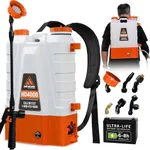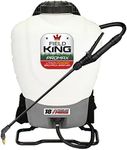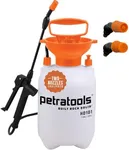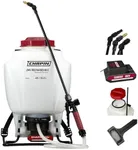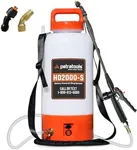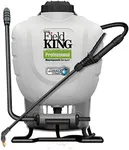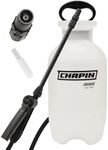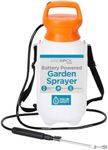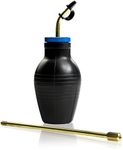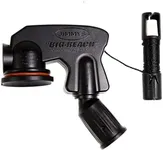Buying Guide for the Best Weed Sprayers
Choosing the right weed sprayer can make a significant difference in maintaining your garden or lawn. The right sprayer will help you apply herbicides efficiently and effectively, ensuring that you target weeds without damaging your plants. When selecting a weed sprayer, consider the size of your garden, the type of weeds you are dealing with, and how often you plan to use the sprayer. Here are some key specifications to consider when choosing a weed sprayer.Tank CapacityTank capacity refers to the amount of liquid the sprayer can hold. This is important because it determines how much area you can cover before needing to refill. Small tanks (1-2 gallons) are suitable for small gardens or spot treatments, medium tanks (3-5 gallons) are good for medium-sized gardens, and large tanks (over 5 gallons) are ideal for large areas or commercial use. Choose a tank size based on the size of your garden and how often you want to refill the sprayer.
Pump TypeThe pump type determines how the sprayer builds pressure to spray the liquid. There are manual pumps, battery-operated pumps, and gas-powered pumps. Manual pumps require physical effort and are best for small areas. Battery-operated pumps are easier to use and suitable for medium to large gardens. Gas-powered pumps are the most powerful and are ideal for very large areas or professional use. Consider your physical ability and the size of the area you need to treat when choosing a pump type.
Spray PatternThe spray pattern refers to how the liquid is dispersed from the nozzle. Common patterns include a fine mist, a narrow stream, and a wide fan. A fine mist is good for covering large areas evenly, a narrow stream is ideal for targeting specific weeds, and a wide fan is useful for covering medium-sized areas quickly. Choose a sprayer with adjustable spray patterns if you need versatility, or select a specific pattern based on your primary use.
Material and DurabilityThe material of the sprayer affects its durability and resistance to chemicals. Common materials include plastic, stainless steel, and polyethylene. Plastic sprayers are lightweight and affordable but may not be as durable. Stainless steel sprayers are very durable and resistant to corrosion but can be heavy. Polyethylene sprayers offer a good balance of durability and weight. Consider how often you will use the sprayer and the types of chemicals you will be using when choosing the material.
Nozzle TypeThe nozzle type affects the precision and control of the spray. Adjustable nozzles allow you to change the spray pattern and flow rate, providing versatility for different tasks. Fixed nozzles are simpler and may be more durable but offer less flexibility. Choose an adjustable nozzle if you need to switch between different spray patterns, or a fixed nozzle if you prefer simplicity and durability.
PortabilityPortability refers to how easy it is to move the sprayer around your garden. Handheld sprayers are lightweight and easy to carry, making them ideal for small areas. Backpack sprayers distribute the weight evenly on your back, making them suitable for medium to large areas. Wheeled sprayers are the easiest to move and are best for very large areas or if you have physical limitations. Consider the size of your garden and your physical ability when choosing the portability of the sprayer.
